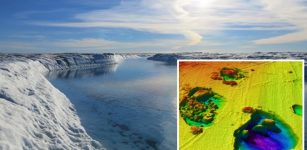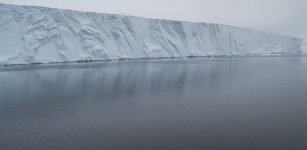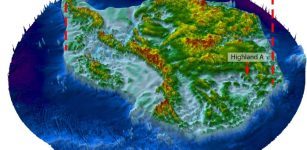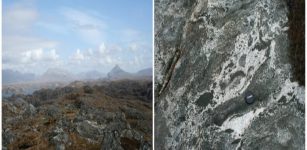First Active Methane Seep In Antarctica And Its Role In Warming Of The Planet
Eddie Gonzales Jr. – MessageToEagle.com – The discovery of the first active methane seep in Antarctica is providing scientists a new understanding of the methane cycle and the role methane found in this region may play in warming the planet.
 The white microbial mats seen here are telltale signs of areas where methane may be released from underground methane deposits. Image credit: Andrew Thurber, Oregon State University
The white microbial mats seen here are telltale signs of areas where methane may be released from underground methane deposits. Image credit: Andrew Thurber, Oregon State University
Methane seep is a location where methane gas escapes from an underground reservoir and into the ocean. Methane seeps have been found throughout the world’s oceans, but the one discovered in the Ross Sea was the first active seep found in Antarctica, said Andrew Thurber, a marine ecologist and an assistant professor in Oregon State’s College of Earth, Ocean, and Atmospheric Sciences and the College of Science’s Department of Microbiology.
“Methane is the second-most effective gas at warming our atmosphere and the Antarctic has vast reservoirs that are likely to open up as ice sheets retreat due to climate change,” Thurber said in a press release.
“This is a significant discovery that can help fill a large hole in our understanding of the methane cycle.”
The researchers’ findings were published today in the journal Proceedings of the Royal Society B. Co-authors are Sarah Seabrook and Rory Welsh, who were graduate students at OSU during the expeditions.
Methane is a greenhouse gas that is 25 times more powerful than carbon dioxide at warming the planet. Most methane in the ocean water and sediment is kept out of the atmosphere by microbes that consume it. Researchers discovered that the microbes around the Antarctic seep are fundamentally different that those found elsewhere in the world’s oceans.
The Ross Sea seep was discovered in an area that scientists have studied for more than 60 years, but the seep was not active until 2011, said Thurber.
An expansive microbial mat, about 70 meters long by a meter across, formed on the seafloor about 10 meters below the frozen ocean surface. These mats – produced by bacteria that exist in a symbiotic relationship with methane consumers – indicate the presence of a seep.
“The microbial mat is the road sign that there’s a methane seep here,” Thurber said. “We don’t know what caused these seeps to turn on. We needed some dumb luck to find an active one, and we got it.”
Antarctica is believed to contain as much as 25 percent of Earth’s marine methane. Having an active seep to study gives researchers a new understanding of the methane cycle and how that process might differ in Antarctica compared to other places on the planet, Thurber said.
Written by Eddie Gonzales Jr. – MessageToEagle.com Staff










